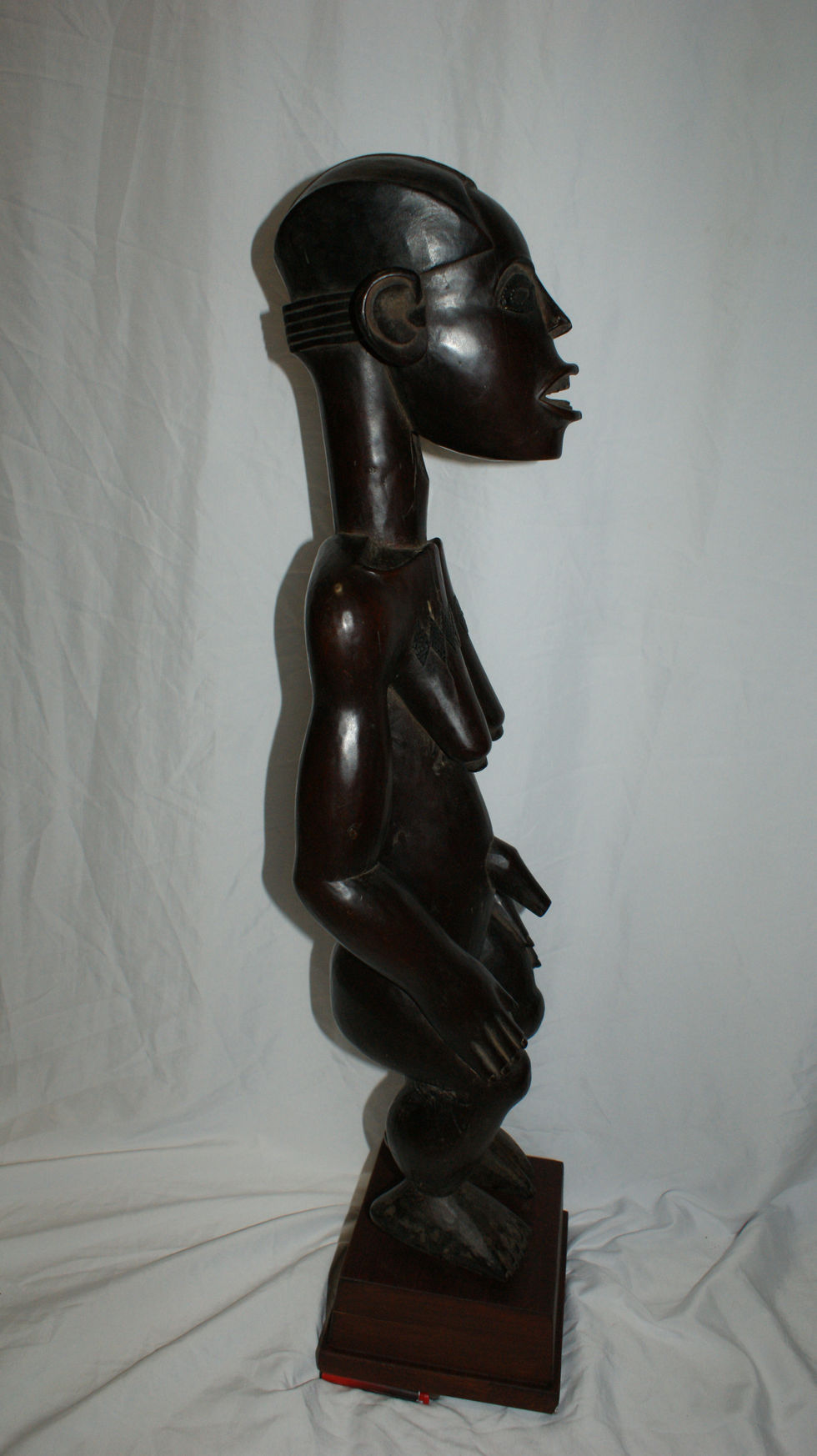W🌍RLD HISTORY
Create Your First Project
Start adding your projects to your portfolio. Click on "Manage Projects" to get started
Statue, Fang Mabea
Project type
statue
History
This Fang Mabea statue dates to the early 19th century and is made of wood and metal. It stands at 67.5 cm (26 ⅔ in) high. It originates from Cameroon, a region inhabited by the Fang people, including the Mabea subgroup.
This particular sculpture has a distinguished provenance, having been part of several significant collections:
Collection Félix Fénéon, Paris (1861-1944)
Etude Bellier, Hôtel Drouot, Paris, "Collection Fénéon, Afrique, Océanie, Amérique", June 11-13, 1947, no. 63, pl. IV
Collection Albert Kleinmann, Paris
Poulain & Cornette de Saint-Cyr, Hôtel Drouot, Paris, December 18, 1972, no. M
Collection Jacques et Anne Kercache, Paris
Collection Robert T. Wall Family
It has also been exhibited in notable venues, indicating its recognition and importance in the art world:
Bruxelles, Palais des Beaux-Arts, L'Art Nègre, November 15 - December 31, 1930
Paris, Théâtre Edouard VII, La sculpture des Noirs de l'Afrique, December 1936 - January 1937
These details highlight its journey through prominent collections and exhibitions, solidifying its historical and artistic value.
Cultural Significance
This Fang Mabea statue is a reliquary figure, also known as a byeri. Reliquary figures were central to the Fang ancestral cult, serving as guardians of sacred bark boxes (byeri) that contained the skulls and bones of important lineage ancestors.
Ancestor Veneration: The figures were the visible embodiment of powerful ancestors, providing a focal point for communication, prayer, and offerings to ensure the well-being and continuity of the lineage.
Protection: They were believed to protect the ancestral relics from malevolent forces or unauthorized access, thereby safeguarding the spiritual power of the clan.
Initiation and Education: Reliquary figures played a vital role in initiation ceremonies for young men, where they served as educational tools to transmit knowledge about lineage history, moral codes, and cultural values.
Social Cohesion: The byeri cult, facilitated by these figures, reinforced social structures, maintained order, and celebrated the shared history and identity of the Fang community.
Symbolism and Design
The design of this Fang Mabea statue exhibits characteristic features of Fang reliquary art, rich in symbolic meaning:
Composite Form (Youthful Vitality & Ancestral Wisdom): The figure displays a blend of youthful vitality (indicated by a taut, muscular body and often an erect phallus) and ancestral wisdom (conveyed by the contemplative facial expression and emphasis on the head). This duality symbolizes the continuous cycle of life, death, and rebirth, and the enduring power of the ancestors.
Enlarged Head: The head is proportionally large, emphasizing its significance as the seat of the soul, intellect, and spiritual power.
Facial Features: The face typically features a stylized yet expressive rendering, often with a prominent forehead, arched brows, and a mouth open to reveal teeth. The open mouth can symbolize the speaking wisdom of the ancestor or a protective, watchful gaze. The eyes are often stylized, sometimes with inlaid metal.
Elongated Torso and Shortened Limbs: The figure often has a somewhat elongated torso and relatively short, bent limbs, creating a compact yet powerful form, indicative of constant readiness to protect.
Posture: The squatting or seated posture, with hands clasped or resting on the abdomen/thighs, suggests vigilance, contemplation, and a grounded presence.
Patina: The dark, glossy patina on the wood is a result of repeated anointing with palm oil during rituals. This process not only preserved the wood but also enhanced the figure's spiritual potency and aesthetic beauty, making it a "living" surface that absorbed the essence of its veneration.
Metal Elements: The mention of metal in the description (often found as inlays in eyes or teeth, or as bands) further highlights the valuable and protective nature of the figure.
Stylized Hair/Headdress: While not always elaborately detailed, the head often features a carved representation of a cap or hairstyle unique to the Mabea subgroup, contributing to its distinct identity.





